#activated carbon
Text
The Truth About Activated Charcoal
You may have seen a post going around warning people to avoid foods colored with activated charcoal because it can interfere with certain medications. This is well-meaning advice, but the facts about what activated charcoal actually does have been muddled. FIRST: Activated charcoal only affects the gastrointestinal tract. That means:
If you take long-acting birth control via injection, or have a birth control implant, activated charcoal will not interfere with that medication. AC can only interfere with birth control that is taken orally, i.e., the pill.
If you take hormones via injection, or by applying it to your skin (as a gel, dermal patch, et cetera), activated charcoal will not interfere with that medication.
If you take insulin via injection or a subcutaneous pump, activated charcoal will not interfere with that medication.
Activated charcoal works exclusively within the gastrointestinal tract. It adsorbs (different from absorbs) chemicals that are dissolved into liquid form and which the AC makes direct, physical contact with. It cannot affect anything that doesn't go through the gastrointestinal tract! Medications (or drugs, or poisons) that you take as injections, inhalants, vaginal suppositories, and/or topical treatments cannot be affected by activated charcoal.
SECOND: Even if you take your medication orally (or through a tube that enters the stomach or intestines, or as a rectal suppository) it may not be chemically able to be adsorbed by AC. Activated charcoal does not significantly affect:
Metals (incl. lithium; iron, calcium, or zinc supplements)
Electrolytes (incl. magnesium, sodium, or potassium supplements)
Alcohol
Furthermore, AC loses effectiveness if taken more than one hour after a substance is ingested, and even with very high doses or delayed-release drugs, four hours is the limit for it to be considered to have any clinical effect at all. If you take medication (or drugs) more than four hours prior to ingesting AC, the vast majority of the chemical will have already been absorbed through the stomach/intestinal lining and into the bloodstream before the AC has a chance to reach it.
Also, this is considering activated charcoal at maximum pharmacological efficacy -- at the strength it is used in emergency rooms. Charcoal purchased at craft or food supply stores, or online, may not be nearly as potent as the medical-grade stuff hospitals use to treat poisoning. It may not be "activated" at all! Activated charcoal is made through a special process of heating charcoal in high-temperature, low-oxygen environments and then mixing it with other chemicals to eliminate any remaining contaminants. It's very likely that the "activated charcoal" on store shelves is just normal charcoal, aka "burnt plant material."
There are other reasons not to use AC as a food additive (constipation, teeth staining, dehydration) but it will not magically render all your medications null and void, and it certainly won't "flush out" hormone replacement therapy -- even if it inhibits your body's absorption of oral HRT medications like estradiol, it absolutely will not affect any hormones that have already entered your bloodstream. Consider that people have never worried about AC interfering with natively-produced hormones. There is no mechanism by which activated charcoal, or any substance, can differentiate between which hormones your body made on its own and which ones were taken as HRT. Again: activated charcoal does not have any effect on hormone levels in the blood. It is entirely limited to the gastrointestinal tract.
Please try and take a moment to fact-check any post you see that makes any claim about medication interactions, contraindications, overdoses, or side effects. Even if the post seems to be offering well-meaning "better safe than sorry" advice, this is a serious, delicate subject, and misinformation about medicine can have disastrous consequences (I'm looking at you, horse dewormer)
The main source of this information is this article from StatPearls. Information about potential side effects of activated charcoal consumption comes from this article by INTEGRIS.
#i dont have any expectation that this will ever outpace the 81k note original post but it would be cool if ppl reblogged it. thanks#charcoal#activated charcoal#activated carbon
231 notes
·
View notes
Text
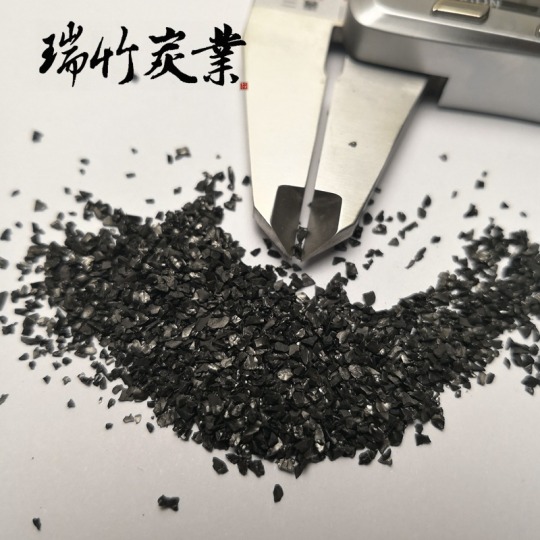
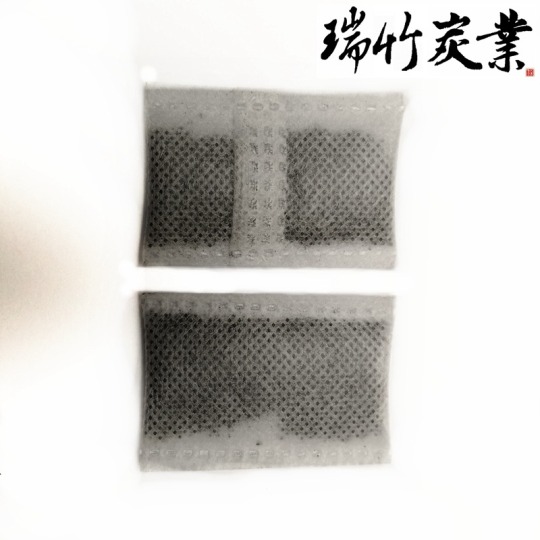

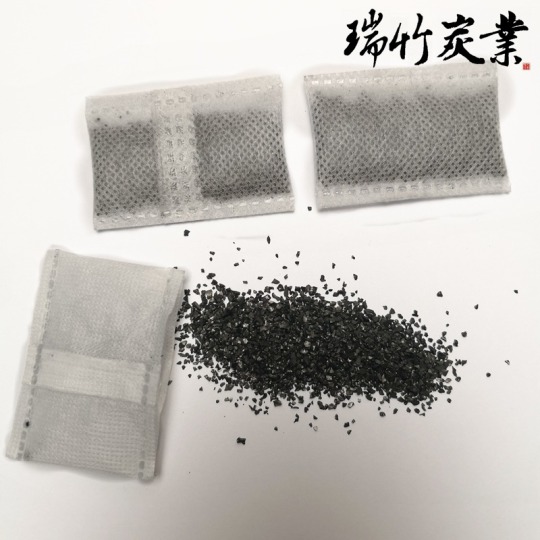
Multi-specification activated carbon pet water dispenser filter element coconut shell activated carbon small bag resin bag carbon bag
Factory direct sales, reliable and reliable
2 notes
·
View notes
Text
Idk if this is something people discuss and I’m just not in those circles but I feel like the lack of public awareness about the usage and effects of activated charcoal, especially with all these new health and beauty “hacks” and such, is like—genuinely unethical?
Bc like, if you take any medications whatsoever then activated charcoal is going to Fuck You Up. Activated charcoal binds to toxins and drugs and prevents them from being absorbed by the stomach lining, allowing them to pass through the body less harmfully. It’s used when someone has ingested some poison or overdosed on a drug and they need to prevent it from being absorbed before they can start other steps to save someone. Other than that, it doesn’t really have any benefits.
So if you’re on any medication at all, activated charcoal will suck that up and prevent it from actually doing it’s job. And I think it’s so crazy that so many of these health products and recipes that advertise the “benefits” of activated charcoal never mention that it can be harmful.
#activated charcoal#not art#health#activated charcoal powder#activated carbon#random rant#like really random#I do not usually post about the dangers of activated charcoal#so if you want more of that don’t follow me#but if you like art….
2 notes
·
View notes
Text
Activated Carbon in Green Building: Sustainable Solutions for Indoor Air Quality

Introduction:
In the pursuit of sustainable construction practices, green building initiatives are gaining momentum worldwide. Among the various components contributing to green buildings, indoor air quality (IAQ) plays a crucial role in ensuring occupant health and comfort. Activated carbon, with its exceptional adsorption properties, has emerged as a sustainable solution for improving IAQ in green buildings. This article explores the role of activated carbon in green building design, its benefits for indoor air purification, and its impact on creating healthier living environments.
According to Next Move Strategy Consulting, the global Activated Carbon Market is predicted to reach USD 10.85 billion by 2030 with a CAGR of 7.8% from 2024-2030.
Download FREE Sample: https://www.nextmsc.com/activated-carbon-market/request-sample
Understanding Activated Carbon: Activated carbon, also known as activated charcoal, is a highly porous material derived from carbonaceous substances such as coconut shells, wood, or coal. Through a process of activation, typically involving high temperatures and steam, the carbon material undergoes structural changes, resulting in a vast network of pores and a large surface area. This unique structure enables activated carbon to adsorb a wide range of contaminants, including volatile organic compounds (VOCs), odors, and airborne pollutants, making it an ideal choice for indoor air purification in green buildings.
Benefits of Activated Carbon in Green Building: Activated carbon offers several advantages for improving IAQ in green buildings. Firstly, it effectively removes harmful pollutants and allergens from the indoor environment, including VOCs emitted by building materials, furniture, and cleaning products. By adsorbing these contaminants, activated carbon helps reduce the risk of respiratory problems, allergies, and other health issues associated with poor indoor air quality. Additionally, activated carbon filters can trap fine particulate matter (PM2.5) and airborne pathogens, further enhancing indoor air cleanliness and occupant well-being.
Inquire before buying: https://www.nextmsc.com/activated-carbon-market/inquire-before-buying
Moreover, activated carbon is a sustainable and eco-friendly material, aligning with the principles of green building design. It can be derived from renewable sources such as coconut shells or wood waste, minimizing environmental impact and promoting resource conservation. Activated carbon filters can also be recycled or regenerated, extending their lifespan and reducing waste generation. By incorporating activated carbon filtration systems into green building projects, architects and developers can enhance sustainability credentials while ensuring superior indoor air quality for occupants.
Geographical analysis
Asia-Pacific dominates the activated carbon and it is convincingly expected to remain dominant in the Activated Carbon Market throughout the forecast period. China, Japan, and India are major consuming countries that are expected to lead the market in this region for the next several years.Also, the upsurge in the population of the Asia-Pacific region has led to a rise in demand for pure and safe potable water. This, coupled with the availability of raw materials and other resources will drive the growth of the market in this region.
Applications of Activated Carbon in Green Buildings: Activated carbon finds diverse applications in green building design, ranging from ventilation systems to air purifiers and HVAC filters. In ventilation systems, activated carbon filters can be integrated to capture and neutralize indoor air pollutants before recirculating clean air into living spaces. Air purifiers equipped with activated carbon filters are commonly used in residential and commercial settings to remove odors, smoke, and other contaminants from indoor air. Additionally, activated carbon-impregnated HVAC filters are increasingly being adopted in green buildings to improve IAQ and energy efficiency simultaneously.
Furthermore, activated carbon can be incorporated into building materials and finishes to mitigate indoor air pollution. For example, paints and coatings formulated with activated carbon can help absorb VOCs emitted by interior surfaces, contributing to healthier indoor environments. Similarly, furniture and upholstery treated with activated carbon can reduce off-gassing of harmful chemicals, promoting occupant well-being and comfort in green buildings.
Case Studies and Success Stories: Numerous green building projects worldwide have successfully implemented activated carbon solutions to enhance indoor air quality and occupant comfort. For instance, the Bullitt Center in Seattle, Washington, a flagship green building certified as a Living Building, utilizes activated carbon filtration systems in its natural ventilation strategy to maintain superior indoor air quality without compromising energy efficiency. Similarly, the Pixel Building in Melbourne, Australia, incorporates activated carbon-impregnated facade panels to filter outdoor air and create a healthy indoor environment for occupants.
These case studies highlight the effectiveness of activated carbon in green building design and its positive impact on occupant health and well-being. By integrating activated carbon solutions into their projects, architects, developers, and building owners can achieve the dual goals of sustainability and superior indoor air quality, thus contributing to healthier, more comfortable living and working environments.
Future Outlook and Conclusion: As the importance of indoor air quality continues to gain prominence in green building design, the demand for activated carbon solutions is expected to rise. Innovations in activated carbon technology, such as the development of advanced filtration media and regeneration techniques, will further enhance its effectiveness and sustainability in indoor air purification. Additionally, with increasing awareness of the health benefits associated with clean indoor air, building codes and standards may evolve to incorporate requirements for IAQ management, driving the adoption of activated carbon solutions in green buildings worldwide.
Competitive Landscape
The activated carbon market is highly segmented with several global and regional players such as Cabot Corporation, Osaka Gas Chemicals and Co. Ltd., Haycarb Pvt Ltd., Ingevity Corporation, Donao Carbon GmbH, Universal Carbons, Calgon Carbon Corporation, Activated Carbon Technologies, Adsorbent Carbons, Jacobi Carbons AB, Kureha Corporation, Kuraray Ltd., and Oxbow Activated Carbons. These key market players are adopting several strategies such as joint ventures, expansion, mergers and acquisitions, and partnerships to sustain their dominance in the global activated carbon market.
Conclusion
Activated carbon holds tremendous potential as a sustainable solution for improving indoor air quality in green buildings. Its proven effectiveness in removing pollutants, eco-friendly nature, and versatility make it an invaluable tool for architects, developers, and building professionals striving to create healthier, more sustainable built environments. By embracing activated carbon solutions, green building projects can achieve optimal IAQ standards while advancing the goals of sustainability, occupant health, and well-being.
0 notes
Text
Hydroejector
Maximize efficiency and minimize hassle in powder transfer with Sodimate Inc.'s Hydroejector! Engineered with precision and innovation, our Hydroejectors harness the power of the Venturi principle, utilizing pressurized liquids to effortlessly transfer powders between locations. Contact us now!
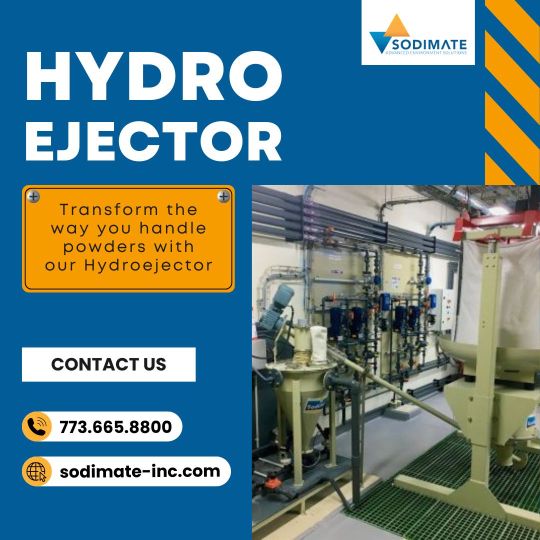
0 notes
Text
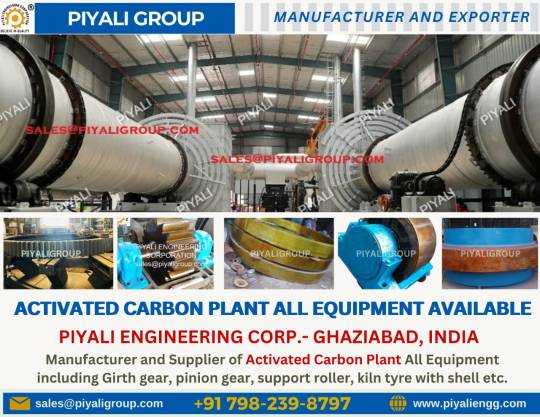
0 notes
Text
Universal Carbons: Purifying Solutions for Beverages, Pharmaceuticals, and Oral Care with Activated Carbon and Vegetable Charcoal
In the world of purification and detoxification, few substances boast the versatility and effectiveness of activated carbon and vegetable charcoal. From beverages to pharmaceuticals, and even oral care products like charcoal toothpaste, Universal Carbons stands as a leading provider of these purifying solutions. Let's delve into the myriad applications and benefits of these remarkable substances.
Activated Carbon: A Versatile Purifying Agent
Activated carbon, also known as activated charcoal, is a highly porous material with an incredibly large surface area. This unique structure allows it to adsorb a wide range of impurities and contaminants, making it indispensable in various industries.
Activated Carbon for Beverages: Enhancing Quality and Purity
In the beverage industry, maintaining product quality and purity is paramount. Universal Carbons' activated carbon for beverages plays a crucial role in achieving these goals. By effectively removing unwanted tastes, odors, and contaminants, activated carbon ensures that beverages meet the highest standards of quality and taste.
Whether it's water, juices, or alcoholic beverages, the use of activated carbon guarantees a clean and refreshing end product that delights consumers and enhances brand reputation.
Activated Carbon for Pharmaceutical Applications
When it comes to pharmaceuticals, purity is non-negotiable. Universal Carbons understands the critical role that activated carbon plays in ensuring the safety and efficacy of pharmaceutical products. Activated carbon for paracetamol and other APIs (Active Pharmaceutical Ingredients) is meticulously engineered to meet the stringent requirements of the pharmaceutical industry.
By removing impurities and toxins, activated carbon helps pharmaceutical manufacturers produce medications that are safe, reliable, and free from contaminants, thus safeguarding the health and well-being of consumers.
Activated carbon for API
Activated carbon is indispensable for purifying Active Pharmaceutical Ingredients (APIs), ensuring their safety and efficacy. By employing adsorption, activated carbon effectively eliminates impurities, contaminants, and by-products from APIs during manufacturing processes. This stringent purification process is crucial for meeting regulatory standards and producing pharmaceutical-grade substances. With its high adsorptive capacity and versatility, activated carbon guarantees the purity and quality of APIs, contributing to the development of safe and effective medications for healthcare professionals and patients worldwide.
Vegetable Charcoal: Nature's Purifier
In addition to activated carbon, Universal Carbons offers vegetable charcoal as a natural alternative for purification. Derived from renewable sources such as coconut shells or wood, vegetable charcoal harnesses the purifying power of nature to deliver clean and sustainable solutions.
Activated Carbon for Beverages: Enhancing Taste and Quality
Activated carbon plays a pivotal role in the beverage industry by ensuring that products meet stringent quality standards and provide consumers with an exceptional taste experience. Through a process known as adsorption, activated carbon effectively removes impurities, off-flavors, and odors from beverages, resulting in a cleaner, more refreshing taste.
Whether it's water, fruit juices, or alcoholic beverages, the quality of the final product often depends on the purification process. Universal Carbons' activated carbon for beverages is specifically designed to optimize taste and purity, ensuring that every sip is a delight to the senses.
By removing contaminants such as chlorine, sulfur compounds, and volatile organic compounds (VOCs), activated carbon enhances the clarity, aroma, and overall palatability of beverages. This not only improves consumer satisfaction but also boosts brand reputation and loyalty.
Furthermore, activated carbon serves as a versatile tool for beverage manufacturers, offering flexibility in processing and production. From large-scale purification systems to specialized filtration cartridges, Universal Carbons provides tailored solutions to meet the unique needs of each client, enabling them to consistently deliver high-quality beverages to market.
In a competitive industry where taste and quality are paramount, activated carbon stands as an indispensable ally, ensuring that beverages meet and exceed customer expectations.
Activated Carbon for Paracetamol: Ensuring Pharmaceutical Purity
In the pharmaceutical industry, purity and safety are of utmost importance, especially when it comes to medications like paracetamol. Universal Carbons' activated carbon for paracetamol plays a crucial role in ensuring the quality and efficacy of this widely used pain reliever.
During the manufacturing process, activated carbon is employed to purify paracetamol, removing impurities, by-products, and contaminants that could compromise its potency or safety. Through adsorption, activated carbon effectively captures and immobilizes unwanted substances, leaving behind a pure and pharmaceutical-grade product.
This rigorous purification process not only meets regulatory requirements but also ensures that patients receive medications that are safe, reliable, and free from harmful substances. Whether in tablet, capsule, or liquid form, paracetamol purified with activated carbon provides healthcare professionals and consumers with confidence in its quality and effectiveness.
Universal Carbons' commitment to excellence in pharmaceutical purification extends beyond paracetamol to encompass a wide range of active pharmaceutical ingredients (APIs). With their expertise in activated carbon technology and dedication to quality assurance, Universal Carbons continues to be a trusted partner for pharmaceutical manufacturers worldwide, safeguarding public health and well-being through purity and precision.
Activated Charcoal Toothpaste: Revolutionizing Oral Care
In recent years, activated charcoal toothpaste has gained popularity as a natural alternative for oral care. Universal Carbons' innovative formulations leverage the adsorptive properties of activated charcoal to effectively remove stains, impurities, and bacteria from the teeth and gums.
By incorporating activated charcoal toothpaste into their daily oral hygiene routine, consumers can enjoy a brighter, cleaner smile without the use of harsh chemicals or abrasives.
Conclusion: Elevating Standards with Universal Carbons
From beverages to pharmaceuticals and oral care products, Universal Carbons is dedicated to providing purifying solutions that meet the highest standards of quality, purity, and sustainability. With their extensive expertise and commitment to innovation, Universal Carbons continues to revolutionize industries and enhance the lives of consumers around the globe. Experience the power of activated carbon and vegetable charcoal with Universal Carbons today.
#Activated Carbon#Activated Carbon For Beverages#Activated Carbon For Paracetamol#activated carbon for API#Vegetable Charcoal#Activated Charcoal Toothpaste
1 note
·
View note
Text
What is Coconut Shell Activated Carbon?

Coconut shell activated carbon is a remarkable substance derived from the outer husk of coconuts. This natural material undergoes a meticulous process to become a highly effective filtering agent used in various industries and applications.
At its core, activated carbon is essentially carbon that has been processed to have an incredibly porous structure, giving it a vast surface area for adsorption. This means that it can trap and hold onto a wide range of impurities and contaminants when used in filtration systems.
What makes coconut shell activated carbon particularly special is its origin. Coconut shells are an abundant and sustainable resource, making them an environmentally friendly choice for carbon production. The shells are first cleaned and then heated to extremely high temperatures in the absence of oxygen, a process known as activation. This activation creates countless tiny pores and crevices in the carbon structure, dramatically increasing its surface area and enhancing its adsorption capabilities.
Once activated, coconut shell carbon can be used in various forms such as granular, powder, or pellets, depending on the specific application requirements. It is commonly used in water purification systems, air filtration, gas purification, and even in the production of certain foods and beverages to remove impurities and odors.
CG Carbon stands out as a leading manufacturer and exporter of coconut shell activated carbon, committed to delivering top-notch products and exceptional service to customers worldwide. With a focus on product excellence, competitive pricing, and timely delivery, CG Carbon strives to provide the best solutions for all filtration needs.
In essence, coconut shell activated carbon is a versatile and eco-friendly filtration medium that plays a vital role in ensuring clean and safe environments across various industries and applications.
0 notes
Text

Xiamen All Carbon Corporation Activated Carbon Products
0 notes
Text

Silica Gel With Activated Carbon Canister
A combination of preventing odour and moisture together while simultaneously helping the products to enhance their shelf life for longer.
#Silica Gel With Activated Carbon Canister#Silica Gel#Activated Carbon#Silica Gel With Activated Carbon#Canister#pharma desiccants#pharma packaging#desiccant packaging#pharma#pharmaceutical
0 notes
Link
1 note
·
View note
Text
Carbon Black Market: Illuminating the Global Market Landscape
The increasing carbon black consumption in automotive and construction activities proliferates the global carbon black market expansion. The demand for carbon black is closely tied to the automotive sector due to its usage in tire manufacturing. Growth in the automotive industry tends to drive the demand for carbon black. Carbon black is utilized to improve the mechanical properties of tires such as strength and abrasion resistance.
The expansion of industrial activities and infrastructural development in emerging economies also fuels the demand for carbon black, especially in the construction and manufacturing sectors. Carbon black is used in the production of industrial rubber products, plastics, inks, coatings, and more. It is used as a reinforcing filler in rubber products and as a pigment in various applications. The global need is also increased by applications in the manufacture of consumer products and electronics. Manufacturers of carbon black are likely to experience expansion, due to the expanding paints and coating sector, which is being driven by industrialization.
The carbon black market is shifting in favor of new applications and technologies. Ongoing technological advancements in the production process of carbon black influence market dynamics affecting production efficiency and cost. Expanding applications in the fiber and textile sectors and expanding market penetration of specialty black are likely to increase the market demand for carbon black.
The increasing use of activated carbon black is likely to have an impact on the long-term growth of the market. Activated carbon black is also used in the manufacturing of medical devices and the purification of pharmaceuticals. The growth in the activated carbon black market is anticipated to fuel the growth of the overall carbon black market.
Due to the rising demand from numerous end-user industries, several market competitors are concentrating on raising carbon black production which gives a positive outlook for the overall carbon black market. The increasing environmental regulations and concerns about carbon emissions and sustainable production practices have led to the development of environmentally friendly alternatives to traditional carbon black. Key market players are focusing on seizing this lucrative opportunity in the industry to increase their product offerings and match the environmental trend.
0 notes
Text





Bamboo charcoal for car deodorization, moisture absorption, purification, air drawer, moisture-proof linen activated carbon bag, plum orchid, bamboo and chrysanthemum bamboo charcoal bag
2 notes
·
View notes
Text
What's the Difference Between Charcoal and Activated Carbon?
Do you know the Difference Between Charcoal and Activated Carbon? Here Are Some Major Differences Between Charcoal and Activated Charcoal. Activated carbon has been used in various industries and has diverse applications. Numerous industries rely on charcoal and activated carbon for their excellent and useful properties. Read more Visit Our Blog!
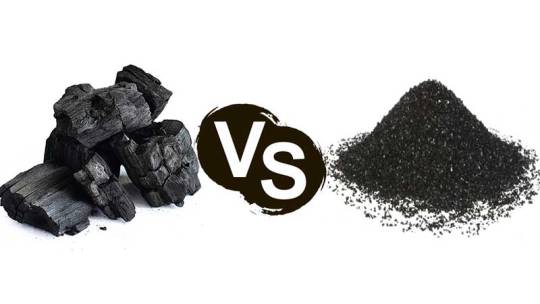
#charcoal and activated carbon#activated carbon#activated carbon supplier in India#activated carbon products
0 notes
Text

Activated Carbon's Rising Role in India's Industry
<p>Discover how<a href="https://www.jmbcarbon.com/importance-of-activated-carbon-in-indias-industrial-sector/"> activated carbon is becoming a vital tool in India's industrial sector</a>, addressing environmental challenges and improving efficiency</p>
0 notes
Text
Activated Carbon
Activated carbon stands as a beacon of purification across air, water, and gas streams, owing to its unparalleled adsorption capabilities. Sodimate specializes in bespoke systems tailored for injecting powdered activated carbon, optimizing every facet of its performance. From inception to precise sorbent injection, our advanced tools ensure peak efficiency. Contact us today to explore customized solutions engineered to elevate your activated carbon processes to new heights.
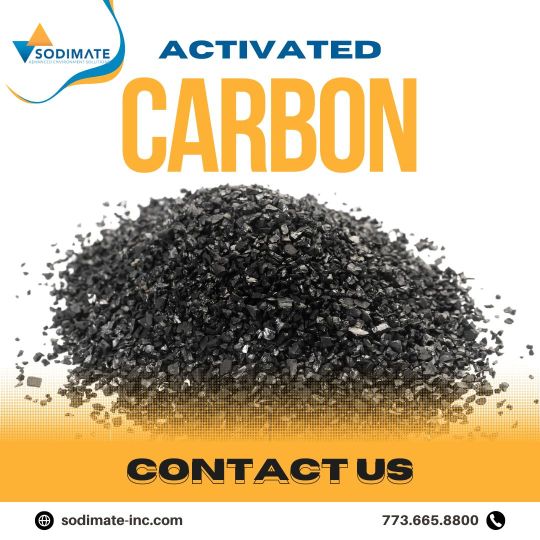
0 notes